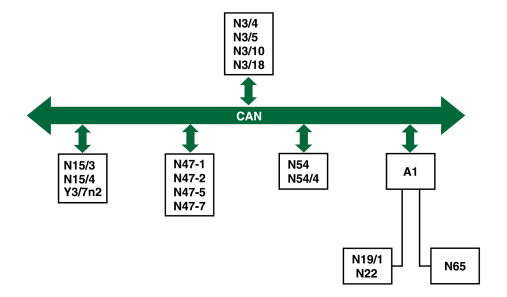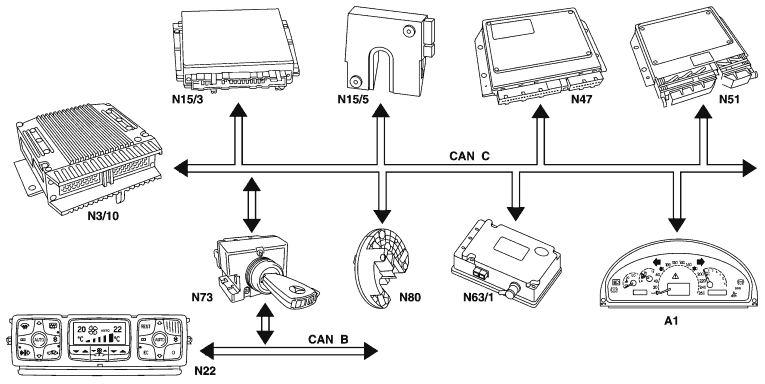Models 129, 140, 163, 168, 170, 202, 203, 208, 210
TO1 Instrument cluster
N3/4 HFM-SFI [HFM] control module
N3/5 ECM control module up to 08/01
N3/10 ME-SFI [ME] control module
N3/18 ECM control module with throttle valve actuator as of 09/01
N15/3 ETC control module (in part Special Equipment)
N15/4 AKS control module (Special Equipment)
N19/1 Tempmatic air conditioning (TAC) pushbutton control module (in part Special Equipment)
cc Air conditioning (AAC) pushbutton control module (in part Special Equipment)
N47-1 ASR control module
N47-2 ETS control module
N47-5 ESP control module
N47-7 ABS control module
N54 RCL control module
N54/4 Radio frequency/infrared DAS [FBS] control module
N65 Cycling module Models 170, 210
Y3/7n2 Front-wheel-drive transmission control (FTC FGS) control module (Special Equipment)


 Data transfer between individual control modules
Data transfer between individual control modules
 terminating resistor is therefore installed in the engine control module (except for the ME-SFI control module with engine 120, which is equipped with a 240
terminating resistor is therefore installed in the engine control module (except for the ME-SFI control module with engine 120, which is equipped with a 240